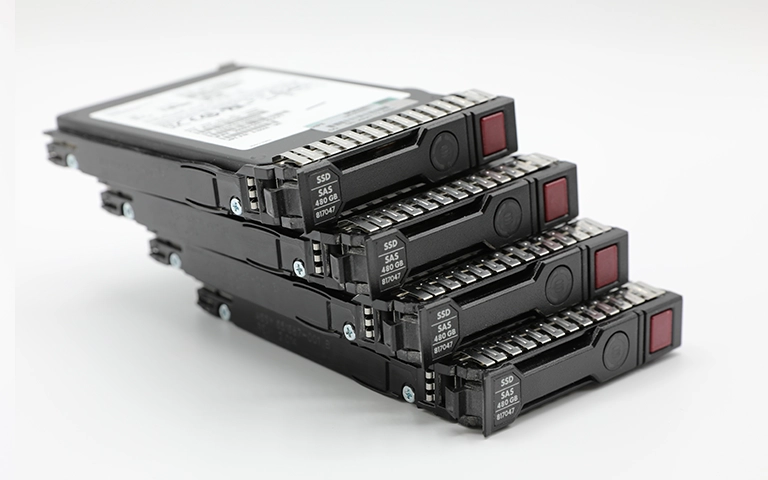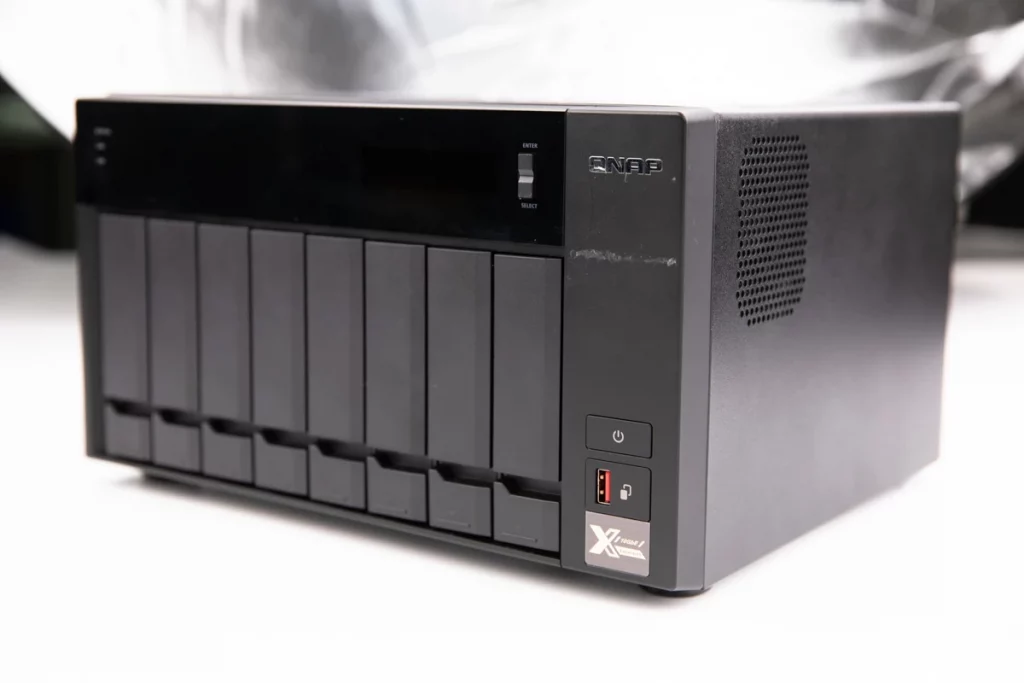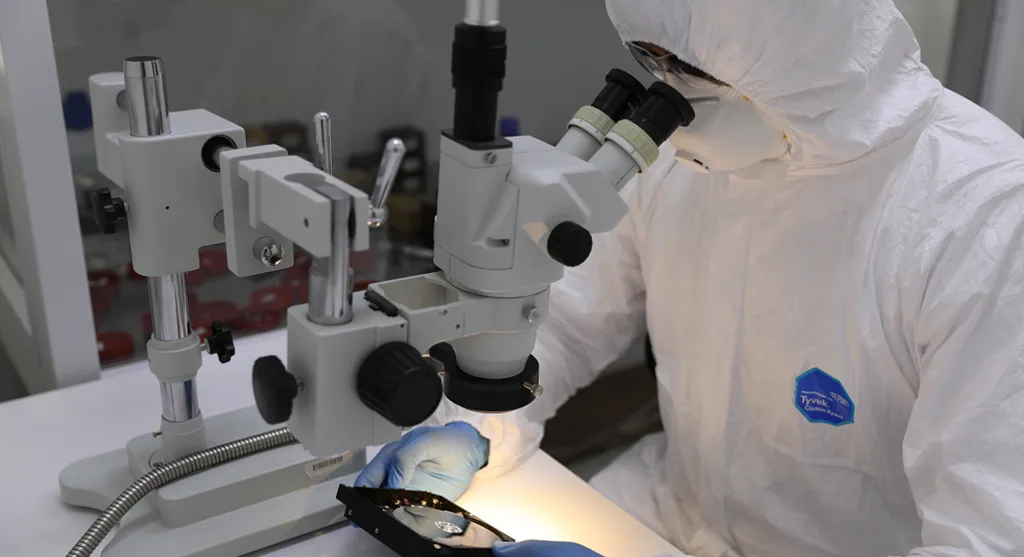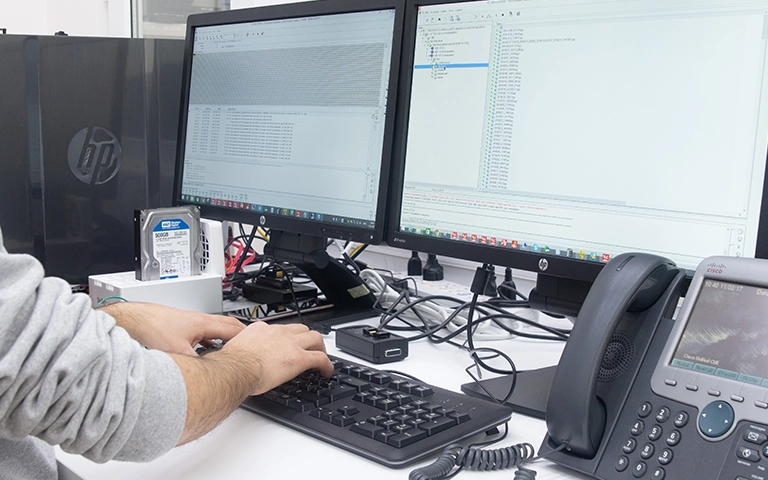A company using a QNAP NAS with a ZFS RAID 10 setup suddenly lost access to its data when the system stopped responding. The four 2TB drives that stored essential business files became unreadable, halting daily operations.
After several failed recovery attempts, the client realized the issue required expert intervention to prevent further data loss.
Understanding the Case: What Went Wrong
ZFS RAID 10 combines the speed of striping with the redundancy of mirroring, making it a reliable setup for critical data storage.
However, when even one mirrored pair encounters simultaneous issues, the array can fail, leading to loss of access across the entire system.
In this case, the NAS failure was likely caused by multiple drive errors that broke ZFS integrity checks. Once the pool became unmountable, standard recovery options were no longer viable.
This highlights why RAID 10 configurations, though robust, still require careful monitoring and why understanding RAID failure rates is essential for long-term reliability.

Client Situation: QNAP NAS with Four 2TB Drives
The client’s QNAP NAS was configured with four 2TB drives running a ZFS RAID 10 array. For months, the system operated smoothly, handling daily business data without issue. Suddenly, the NAS became inaccessible, and the drives were no longer detected properly by the device.
Believing it to be a simple firmware or configuration fault, the client tried several recovery methods, including restarts and pool imports through the QNAP interface. None of these attempts worked, and each action increased the risk of overwriting critical metadata.
Realizing the situation’s complexity, they reached out for professional recovery support familiar with QNAP NAS recovery and ZFS structures.
Why DIY Recovery Attempts Failed
ZFS uses complex data integrity mechanisms that make manual recovery extremely risky. When users attempt to rebuild or re-import a damaged pool without first imaging all drives, the process can overwrite vital parity and metadata structures.
In this case, the client’s repeated reboot and pool import attempts only worsened the situation. The ZFS file system rejected the configuration due to mismatched checksums, leaving the array unmountable.
These challenges are common when dealing with ZFS-based NAS systems, where one wrong command can lead to permanent data loss.
For deeper insight into such scenarios, review our guide on RAID rebuild data loss risks.

Our Professional Recovery Process
Once the QNAP NAS reached our lab, our engineers followed a precise procedure to ensure safe and complete data restoration:
Each of the four drives was inspected and imaged using write-protected tools to prevent further degradation or modification.
Using specialized utilities, we reconstructed the RAID 10 layout from metadata and verified stripe order, block size, and mirror pairing.
The team created a virtual environment replicating the original ZFS RAID 10 configuration to safely test the recovery without altering the source drives.
Engineers rebuilt damaged ZFS components, corrected checksum inconsistencies, and extracted the recovered data into a secure destination.
A file verification session was conducted with the client to confirm that all essential data was intact and accessible before final delivery.
Our structured recovery workflow mirrored the best practices outlined in our RAID troubleshooting guide, ensuring accuracy at every stage.

Successful Data Restoration and Verification
Following the reconstruction process, all four drive images were synchronized successfully, allowing full access to the ZFS RAID 10 volume. The recovery produced a complete set of the client’s operational files, including active business documents and archived records.
During the verification session, the client reviewed file samples remotely and confirmed that all required data was recovered accurately. With the restored dataset transferred to new, stable storage, the company quickly resumed normal operations without further disruption.
Fast turnaround times for business-critical data
Key Takeaways and Preventive Insights
ZFS RAID 10 offers excellent redundancy, but like any storage system, it requires proactive maintenance to prevent data loss. Regular monitoring, firmware updates, and SMART checks can help identify early drive issues before they escalate.
Businesses should also maintain offsite backups and avoid performing recovery attempts without proper imaging. Most importantly, when signs of NAS failure appear, disconnect the system and consult professionals.
To learn more about avoiding storage-related risks, review our article on common NAS data loss causes.
Need Help with ZFS RAID Recovery?
If your ZFS RAID system has failed or become inaccessible, don’t risk permanent data loss by attempting repairs on your own. Our engineers specialize in secure ZFS RAID 10 recovery from QNAP, Synology, and other NAS platforms.
We handle each case with precision from diagnostics to data verification ensuring your critical files are restored safely. Contact RAID Recovery Services today to discuss your situation and begin a professional evaluation.

Trust the experts with proven results
Frequently Asked Questions
What causes a ZFS RAID 10 to fail?
ZFS RAID 10 failures usually occur due to multiple drive errors, controller issues, or corrupted pool metadata. Power surges and failed rebuilds can also break ZFS integrity checks, leading to unmountable volumes.
Can I rebuild a failed ZFS RAID 10 myself?
It’s not recommended. ZFS structures are complex, and rebuild attempts without drive imaging can overwrite valid data. Always seek professional evaluation before performing any recovery actions.
How long does professional ZFS RAID recovery take?
Recovery time depends on drive health and data volume. Most cases are completed within several days after diagnostic evaluation and imaging are finished.
Is it possible to recover all files from a failed ZFS RAID 10?
In most cases, yes. If drives are physically readable and no severe overwrites have occurred, full data recovery is achievable through controlled imaging and virtual reconstruction.
What should I do if my NAS suddenly stops responding?
Immediately power it down, label the drives, and avoid further reboots. Contact a professional RAID recovery service to prevent additional damage and improve recovery success.